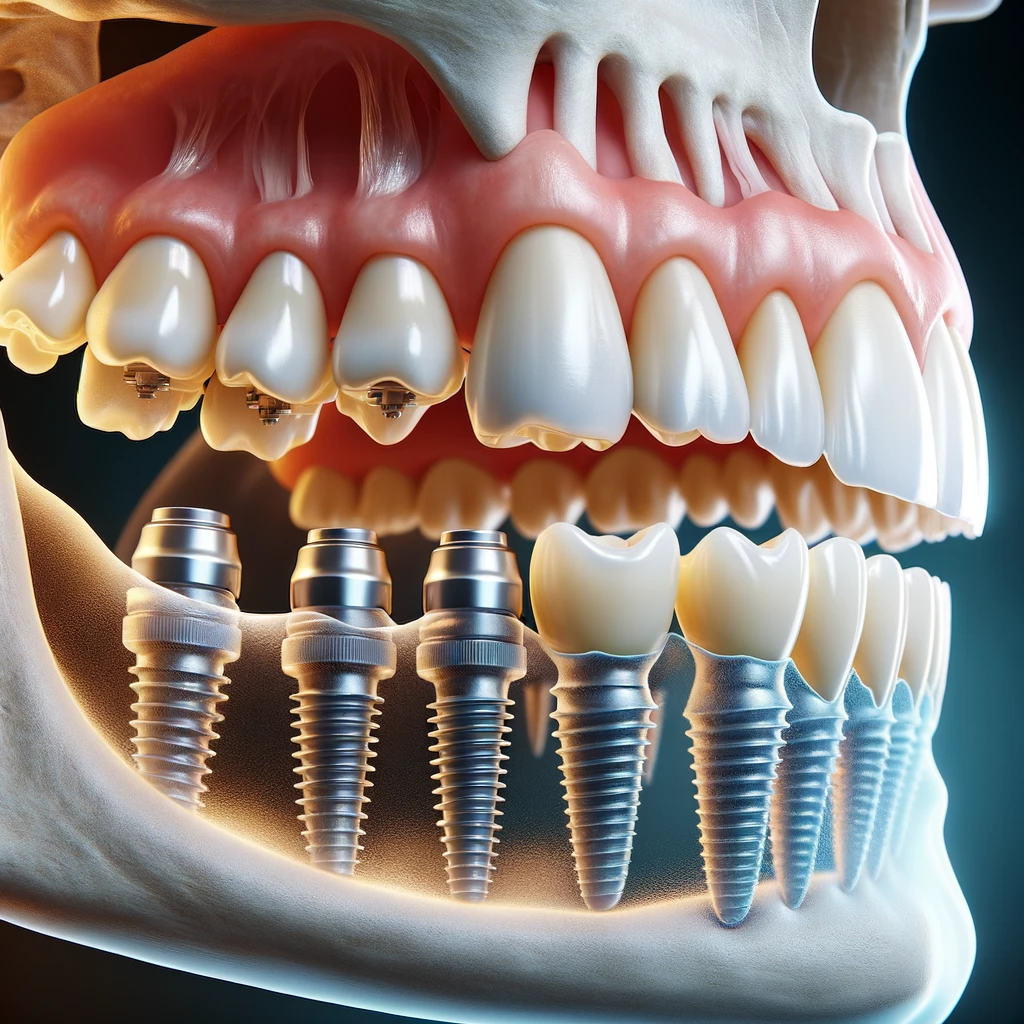Getting The Dental Sense To Work
Getting The Dental Sense To Work
Blog Article
The smart Trick of Dental Sense That Nobody is Discussing
Table of ContentsGetting My Dental Sense To WorkThe Buzz on Dental Sense3 Simple Techniques For Dental SenseAn Unbiased View of Dental Sense
are clinical devices operatively implanted into the jaw to recover a person's capacity to chew or their appearance. They give assistance for fabricated (fake) teeth, such as crowns, bridges, or dentures. When a tooth is lost because of injury or condition, a person can experience difficulties such as quick bone loss, defective speech, or changes to eating patterns that result in pain.Oral dental implant systems contain a dental implant body and oral implant joint and may additionally consist of a joint addiction screw. Same day dental implants. The dental implant body is surgically put in the jawbone instead of the tooth's origin. The oral implant abutment is generally affixed to the implant body by the abutment addiction screw and extends through periodontals right into the mouth to sustain the attached artificial teeth
(https://linktr.ee/dentalsense1)Structure of The Oral Implant System choosing oral implants, talk to your dental company regarding the possible advantages and risks, and whether you are a prospect for the procedure. Things to take into consideration: Your general wellness is a crucial aspect in determining whether you are a good prospect for oral implants, how long it will take to heal, and for how long the dental implant may remain in location.
Cigarette smoking might affect the recovery process and decrease the lasting success of the implant. The recovery procedure for the dental implant body might take numerous months or longer, throughout which time you commonly have a temporary abutment in place of the tooth. the oral implant procedure: Carefully adhere to the dental health instructions provided to you by your oral company.
The Best Strategy To Use For Dental Sense
Implant failing can cause the demand for an additional surgical procedure to deal with or change the implant system. Restores the capability to eat Brings back aesthetic look Aids maintain the jawbone from reducing as a result of bone loss Protects the wellness of the bordering bone and gums Helps keep nearby (close-by) teeth secure Enhances lifestyle Damage to bordering all-natural teeth during implant placement Injury to the surrounding cells throughout surgical procedure, such as sinus opening Injury throughout surgical treatment (as an example, crack of bordering jawbone) Inadequate feature, such as seeming like the teeth do not bite with each other typically A feeling that the tooth is loose or twisting in position arising from an abutment screw loosening Implant body failing (looseness of the dental implant body) due to systemic infection, which may be most likely in individuals with uncontrolled diabetes as a result of neighborhood infection in bone and gums sustaining the implant body because of delayed healing, which may be much more most likely in clients that smoke Trouble cleaning the gum tissues around the dental implant, leading to poor dental hygiene Without treatment gum disease Post-surgical feeling numb because of nerve impingement or damages Always notify healthcare carriers and imaging professionals that you have dental implants prior to any magnetic vibration imaging (MRI) or x-ray procedures.
FDA is not familiar with any type of unfavorable events reported for MRI or x-ray procedures with oral implants. Oral implants systems are normally made of products that follow worldwide agreement criteria of the International Company for Standardization (ISO) or ASTM International. These criteria have details of what makes a safe material.

A dental implant is a framework that changes a missing out on tooth. With screw-like gadgets, the doctor inserts a dental implant into the jawbone, and it functions as a support for a fabricated tooth, called a crown. A tool called an abutment connects the synthetic tooth to the dental implant. The crown is customized to fit the individual's mouth and match the shade of their teeth.
The 8-Minute Rule for Dental Sense
Some individuals are not qualified for oral implant surgery. It is for oral surgeons to operate individuals with: severe illnessuncontrollable metabolic diseasebone or soft cells disease or infectionIf these issues are fixed, a person can have the surgical treatment. In, oral specialists refrain from operating individuals with: If people with any one of the above go through dental implant surgical treatment, there is a greater danger of the dental implant stopping working.

Dental implant surgical treatment is a tailored process. It's not the same for every person. But the adhering to offers a basic overview of what you can anticipate your dental practitioner, dental doctor, periodontist or prosthodontist to do: Position the implant surgically. Offer you time to recover. Affix the blog post and page final crown, bridge or denture.
Next, your cosmetic surgeon will thoroughly position the dental implant into your jaw. If your implant is near the front of your mouth, your dental practitioner will certainly make a short-lived tooth for you to put on until you heal.
Dental Sense Fundamentals Explained
During the healing stage, your jawbone needs to fuse to the dental implant. This procedure can take anywhere from 3 to nine months.
As soon as your implant heals, your dental expert can attach the abutment (small port blog post) and your last remediation (crown, bridge or denture). This typically takes regarding one hour to finish and may need a second minor surgery. You should not feel any discomfort during your oral implant treatment since your supplier will certainly utilize medication to numb your periodontals.
Report this page